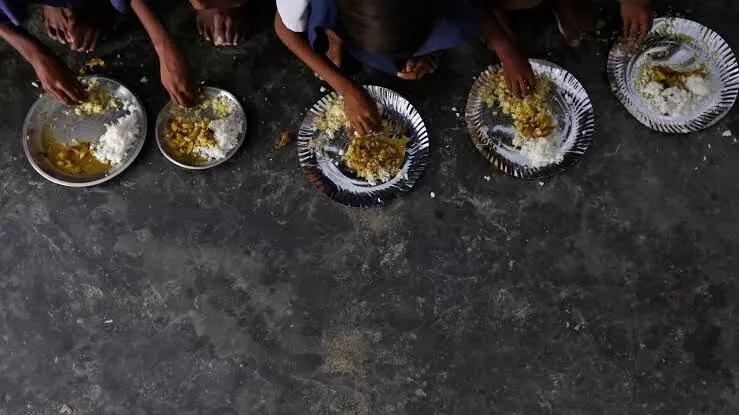
Nearly 90% newborns deprived of minimum acceptable diet in India: NFHS
text_fieldsNew Delhi: 89 per cent of children between the formative ages of 6-23 months in India do not receive a "minimum acceptable diet'', as per a report recently released by National Family Health Survey (NFHS-5) highlighting a key gap in child nutrition.
According to an Indian Express report, the latest figure is only marginally better than the 90.4 per cent recorded in NFHS-4.
The report was based on the analysis of adequate diet received by both breastfeeding and non-breastfeeding children till they reached two years.
The report found that 88.9 per cent of children between 6-23 months, who are breastfeeding, did not receive an adequate diet in 2019-2020 — a slight improvement from 91.3 per cent in 2015-16. And that 87.3 per cent of non-breastfeeding children in this category did not receive adequate nutrition in 2019-21, up from 85.7 per cent in 2015-16.
Among all states and Union Territories, the proportion of children aged 6-23 months who received a minimum acceptable diet was highest in Meghalaya (28.5 per cent) and the lowest in UP and Gujarat (5.9 per cent each).
Apart from Gujarat and UP, 10 other states — Assam (7.2 per cent), Rajasthan (8.3 per cent), Maharashtra (8.9 per cent), Andhra Pradesh (9 per cent), MP (9 per cent), Telangana (9 per cent), Chhattisgarh (9.1 per cent), Jharkhand (10 per cent), Dadra & Nagar Haveli and Daman & Diu (10.2 per cent) and Bihar (10.8 per cent) — recorded a lower than national-level proportion (11 per cent) of children receiving adequate diet.
Among the top-five states where the percentage of children from 6-23 months receiving adequate diet was highest, Meghalaya was followed by Sikkim (23.8 per cent), Kerala (23.3 per cent), Ladakh (23.1 per cent), and Puducherry (22.9 per cent).
The report noted that infants and young children should be fed a minimum acceptable diet to ensure appropriate growth and development. It cautioned that without adequate diversity and meal frequency, infants and young children are vulnerable to undernutrition, especially stunting and micronutrient deficiencies, and to increased morbidity and mortality.
According to Antaryami Dash, acting deputy director (nutrition and health), Save the Children, the minimum acceptable diet is a composite of two main things: breastfeeding and its frequency of up to two years, and dietary diversity.
He noted that a child needs at least four of the food groups indicated by the WHO every day to have a minimum acceptable diet. However, only 25 per cent of children receive this dietary diversity, while 35 per cent of children receive adequate milk frequency.
He further added that this indicator has not improved as much as they had expected between the two surveys while highlighting that India has one of the highest malnutrition burdens in the world.
The NFHS found that access to a minimum acceptable diet in this category of children is higher in urban areas (12.1 per cent) than in rural areas (10.7 per cent).
Sixty-seven per cent of children aged 6-59 months have anaemia, which is higher than the NFHS-4 estimate of 59 per cent. Thirty-six per cent of children under the age of five years are stunted (short for their age); 19 per cent are wasted (thin for their height); 32 per cent are underweight (thin for their age).
The WHO has defined ten essential food groups — cereals and millets, pulses, milk and milk products, roots and tubers, green leafy vegetables, other vegetables, fruits, fat or oil, fish, egg and other meats and sugar — out of which 4-5 every day are required for a child to prevent malnutrition.
























